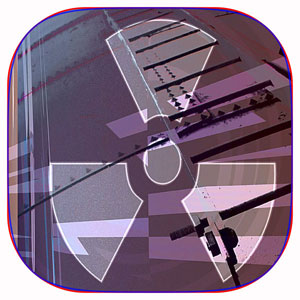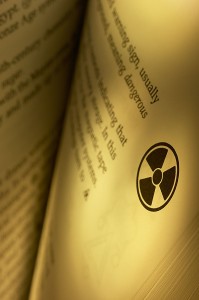


14 Tips To Survive An EMP

With all of the World’s conflicts, terrorist activity, political unrest, combined with rouge nations like North Korea and Iran racing towards nuclear power, the threat of dirty bombs grows.

What is a dirty bomb?
A dirty bomb is a mix of explosives, such as dynamite, with radioactive powder or pellets. When the dynamite or other explosives are set off, the blast carries radioactive material into the surrounding area.
A dirty bomb is not the same as an atomic bomb
An atomic bomb, like those bombs dropped on Hiroshima and Nagasaki, involves the splitting of atoms and a huge release of energy that produces the atomic mushroom cloud.A dirty bomb works completely differently and cannot create an atomic blast. Instead, a dirty bomb uses dynamite or other explosives to scatter radioactive dust, smoke, or other material in order to cause radioactive contamination.
What are the main dangers of a dirty bomb?
The main danger from a dirty bomb is from the explosion, which can cause serious injuries and property damage. The radioactive materials used in a dirty bomb would probably not create enough radiation exposure to cause immediate serious illness, except to those people who are very close to the blast site. However, the radioactive dust and smoke spread farther away could be dangerous to health if it is inhaled. Because people cannot see, smell, feel, or taste radiation, you should take immediate steps to protect yourself and your loved ones.
What immediate actions should I take to protect myself?
These simple steps—recommended by doctors and radiation experts—will help protect you and your loved ones. The steps you should take depend on where you are located when the incident occurs: outside, inside, or in a vehicle.
If you are outside and close to the incident
- Cover your nose and mouth with a cloth to reduce the risk of breathing in radioactive dust or smoke.
- Don’t touch objects thrown off by an explosion—they might be radioactive.
- Quickly go into a building where the walls and windows have not been broken. This area will shield you from radiation that might be outside.
- Once you are inside, take off your outer layer of clothing and seal it in a plastic bag if available. Put the cloth you used to cover your mouth in the bag, too. Removing outer clothes may get rid of up to 90% of radioactive dust.
- Put the plastic bag where others will not touch it and keep it until authorities tell you what to do with it.
- Shower or wash with soap and water. Be sure to wash your hair. Washing will remove any remaining dust.
- Tune to the local radio or television news for more instructions.
If you are inside and close to the incident
- If the walls and windows of the building are not broken, stay in the building and do not leave.
- To keep radioactive dust or powder from getting inside, shut all windows, outside doors, and fireplace dampers. Turn off fans and heating and air-conditioning systems that bring in air from the outside. It is not necessary to put duct tape or plastic around doors or windows.
- If the walls and windows of the building are broken, go to an interior room and do not leave. If the building has been heavily damaged, quickly go into a building where the walls and windows have not been broken. If you must go outside, be sure to cover your nose and mouth with a cloth. Once you are inside, take off your outer layer of clothing and seal it in a plastic bag if available. Store the bag where others will not touch it.
- Shower or wash with soap and water, removing any remaining dust. Be sure to wash your hair.
- Tune to local radio or television news for more instructions.
If you are in a car when the incident happens
- Close the windows and turn off the air conditioner, heater, and vents.
- Cover your nose and mouth with a cloth to avoid breathing radioactive dust or smoke.
- If you are close to your home, office, or a public building, go there immediately and go inside quickly.
- If you cannot get to your home or another building safely, pull over to the side of the road and stop in the safest place possible. If it is a hot or sunny day, try to stop under a bridge or in a shady spot.
- Turn off the engine and listen to the radio for instructions.
- Stay in the car until you are told it is safe to get back on the road.
What should I do about my children and family?
How do I protect my pets?
Should I take potassium iodide?
Will food and water supplies be safe?
How do I know if I’ve been exposed to radiation or contaminated by radioactive materials?
Where do I go for more information?
For more information about dirty bombs, radiation, and health, contact:
The Centers for Disease Control and Prevention (CDC) protects people’s health and safety by preventing and controlling diseases and injuries; enhances health decisions by providing credible information on critical health issues; and promotes healthy living through strong partnerships with local, national, and international organizations.
 In the aftermath of a nuclear emergency, radioactive Iodine can get into your body through eating, drinking or breathing.
In the aftermath of a nuclear emergency, radioactive Iodine can get into your body through eating, drinking or breathing.Your thyroid gland may be seriously damaged as it absorbs this radioactive chemical. One way to protect this gland and prevent absorption is to make your thyroid “full” by taking non radioactive (KI)Potassium Iodide tablets.
The CDC recommends the following dosages upon advisories emergency officials. They may recommend taking one dose every 24 hours up to a few days.
The CDC advises that KI “can protect only the thyroid from radioactive iodine, not other parts of the body”…and will not reverse damage that has already occurred.
We recommend the following educational site for more information: http://emergency.cdc.gov/radiation/ki.asp

Are You Ready? An In-depth Guide to Citizen Preparedness (IS-22) is FEMA’s most comprehensive source on individual, family and community preparedness. The guide has been revised, updated and enhanced in August 2004 to provide the public with the most current and up-to-date disaster preparedness information available.
Are You Ready? provides a step-by-step approach to disaster preparedness by walking the reader through how to get informed about local emergency plans, how to identify hazards that affect their local area and how to develop and maintain an emergency communications plan and disaster supplies kit. Other topics covered include evacuation, emergency public shelters, animals in disaster and information specific to people with access and functional needs.
Are You Ready? also provides in-depth information on specific hazards including what to do before, during and after each hazard type. The following hazards are covered: Floods, Tornadoes, Hurricanes, Thunderstorms and Lightning, Winter Storms and Extreme Cold, Extreme Heat, Earthquakes, Volcanoes, Landslide and Debris Flows (Mudslide), Tsunamis, Fires, Wildfires, Hazardous Materials Incidents, Household Chemical Emergencies, Nuclear Power Plant and Terrorism (including Explosion, Biological, Chemical, Nuclear and Radiological hazards).
Are You Ready? is also available in Spanish, and can be used in a variety of ways including as a read-through or reference guide. The guide can also be used as a study manual guide with credit awarded for successful completion and a 75 percent score on a final exam. Questions about the exam should be directed to the FEMA Independent Study Program by calling 1-800-238-3358 or by going to training.fema.gov/is.
Also available is the Are You Ready? Facilitator Guide (IS-22FG). The Facilitator Guide is a tool for those interested in delivering Are You Ready? content in a small group or classroom setting. The Facilitator Guide is an easy to use manual that has instruction modules for adults, older children and younger children. A resource CD is packaged with the Facilitator Guide that contains customizable presentation materials, sample training plans and other disaster preparedness education resources.
Copies of Are You Ready? and the Facilitator Guide are available through the FEMA publications warehouse (1.800.480.2520). For large quantities, your organization may reprint the publication. Please visit our reprint page for more information.
For more publications on disaster preparedness, visit the Community and Family Preparedness webpage.
Are You Ready? An In-depth Guide to Citizen Preparedness Full Document (PDF – 21Mb)